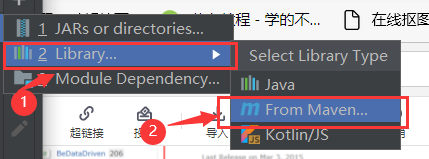基于IO/NIO/Netty的Client/Server的java程序实现
一、IO实现
(一)IO介绍
1.传送IO特点
-
(1)服务端阻塞点
server.accept();获取套接字的时候
inputStream.read(bytes);输入流读取数据的时候 -
(2)传统socket是短连接,可以做短连接服务器,他无法做长连接,属于一问一答的模式,比如老的tomcat底层用的就是socket,用完就会关掉线程,因此不会出现线程一直被占用的情况,支持处理多个客户端连接
- 单线程情况下只能有一个客户端(一个线程维护一个连接,也就是一个socket客户连接)线程一直被占用。
- 用线程池可以有多个客户端连接,但是非常消耗性能(用此案城池,就是老tomcat原理,只不过是用完后就释放)
2.原理图

(二)IDEA创建Java项目
创建两个项目,分别每个项目新建一个类,分别是client和server


(三)代码
1.server服务端
import java.io.IOException;
import java.io.InputStream;
import java.net.ServerSocket;
import java.net.Socket;
public class server {
public static void main(String[] args) throws IOException {
//创建客户端的Socket对象(SevereSocket)
//ServerSocket (int port)创建绑定到指定端口的服务器套接字
ServerSocket ss=new ServerSocket(50000);
//Socket accept()侦听要连接到此套接字并接受他
Socket s=ss.accept();
//获取输入流,读数据,并把数据显示在控制台
InputStream is=s.getInputStream();
byte[] bys=new byte[1024];
int len=is.read(bys);
String data=new String(bys,0,len);
System.out.println("数据是:"+data);
//释放资源
s.close();
ss.close();
}
}
2.client客户端
import java.io.IOException;
import java.io.OutputStream;
import java.net.Socket;
public class client {
public static void main(String[] args) throws IOException{
//创建客户端的Socket对象
//Socket (InetAddress adress,int port)创建流套接字并将其连接到指定IP地址的指定端口号
// Socket s=new Socket(InetAddress.getByName("192.168.224.1"), 10000);
//Socket (String host,int port)创建流套接字并将其连接到指定主机的指定端口号
Socket s=new Socket("127.0.0.1", 50000);
//获取输出流,写数据
//OutputStream getOutputStream();返回此套接字的输出流
OutputStream os=s.getOutputStream();
os.write("helloWorld!".getBytes());
//释放资源
s.close();
}
}
(四)运行结果
分别运行两个项目结果如下

二、NIO实现
(一)NIO介绍
1.NIO的特点
主要API介绍:
ServerSocketChannel对应传统IO中的ServerSocket。
SocketChannel对应传统IO中的Socket。
Selector 是NIO核心 ,负载监听 ServerSocketChannel与SocketChannel ,支持单线程连多个客户端;类似通道管理器而且底层是c实现的;线程拥有一个selector就可以支持多个客户端。
SelectionKey 相当于map中的key 相当于记录根据不同动作做不同事情,一个key一个事件。
2.NIO的通信步骤
①创建ServerSocketChannel,为其配置非阻塞模式。
②绑定监听,配置TCP参数,录入backlog大小等。
③创建一个独立的IO线程,用于轮询多路复用器Selector。
④创建Selector,将之前创建的ServerSocketChannel注册到Selector上,并设置监听标识位SelectionKey.OP_ACCEPT。
⑤启动IO线程,在循环体中执行Selector.select()方法,轮询就绪的通道。
⑥当轮询到处于就绪状态的通道时,需要进行操作位判断,如果是ACCEPT状态,说明是新的客户端接入,则调用accept方法接收新的客户端。
⑦设置新接入客户端的一些参数,如非阻塞,并将其继续注册到Selector上,设置监听标识位等。
⑧如果轮询的通道标识位是READ,则进行读取,构造Buffer对象等。
⑨更细节的问题还有数据没发送完成继续发送的问题…
3.原理图

4.IO/NIO对比
NIO模型中线程数量大大降低,线程切换效率因此也大幅度提高
- IO读写以字节为单位
- NIO解决这个问题的方式是数据读写不再以字节为单位,而是以字节块为单位。IO模型中,每次都是从操作系统底层一个字节一个字节地读取数据,而NIO维护一个缓冲区,每次可以从这个缓冲区里面读取一块的数据, 这就好比一盘美味的豆子放在你面前,你用筷子一个个夹(每次一个),肯定不如要勺子挖着吃(每次一批)效率来得高。

(二)IDEA新建JAVA项目
新建两个java项目,每个项目里新建一个类,如下

(三)代码
1.服务器client:
import java.net.InetSocketAddress;
import java.nio.ByteBuffer;
import java.nio.channels.SelectionKey;
import java.nio.channels.Selector;
import java.nio.channels.ServerSocketChannel;
import java.nio.channels.SocketChannel;
import java.util.Iterator;
import java.util.Set;
public class server {
//网络通信IO操作,TCP协议,针对面向流的监听套接字的可选择通道(一般用于服务端)
private ServerSocketChannel serverSocketChannel;
private Selector selector;
/*
*开启服务端
*/
public void start(Integer port) throws Exception {
serverSocketChannel = ServerSocketChannel.open();
selector = Selector.open();
//绑定监听端口
serverSocketChannel.socket().bind(new InetSocketAddress(port));
//设置为非阻塞模式
serverSocketChannel.configureBlocking(false);
//注册到Selector上
serverSocketChannel.register(selector, SelectionKey.OP_ACCEPT);
startListener();
}
private void startListener() throws Exception {
while (true) {
// 如果客户端有请求select的方法返回值将不为零
if (selector.select(1000) == 0) {
System.out.println("当前没有任务!!!");
continue;
}
// 如果有事件集合中就存在对应通道的key
Set<SelectionKey> selectionKeys = selector.selectedKeys();
Iterator<SelectionKey> iterator = selectionKeys.iterator();
// 遍历所有的key找到其中事件类型为Accept的key
while (iterator.hasNext()) {
SelectionKey key = iterator.next();
if (key.isAcceptable())
handleConnection();
if (key.isReadable())
handleMsg(key);
iterator.remove();
}
}
}
/**
* 处理建立连接
*/
private void handleConnection() throws Exception {
SocketChannel socketChannel = serverSocketChannel.accept();
socketChannel.configureBlocking(false);
socketChannel.register(selector, SelectionKey.OP_READ, ByteBuffer.allocate(1024));
}
/*
* 接收信息
*/
private void handleMsg(SelectionKey key) throws Exception {
SocketChannel channel = (SocketChannel) key.channel();
ByteBuffer attachment = (ByteBuffer) key.attachment();
channel.read(attachment);
System.out.println("当前信息: " + new String(attachment.array()));
}
public static void main(String[] args) throws Exception {
server myServer = new server();
myServer.start(8881);
}
}
server:
import java.net.InetSocketAddress;
import java.nio.ByteBuffer;
import java.nio.channels.SocketChannel;
public class client {
public static void main(String[] args) throws Exception {
SocketChannel socketChannel = SocketChannel.open();
socketChannel.configureBlocking(false);
// 连接服务器
if (!socketChannel.connect(new InetSocketAddress("127.0.0.1", 8881))) {
while (!socketChannel.finishConnect()) {
System.out.println("connecting...");
}
}
//发送数据
String str = "hello,物联网2019级WOOZI";
ByteBuffer byteBuffer = ByteBuffer.wrap(str.getBytes());
socketChannel.write(byteBuffer);
System.in.read();
}
}
2.客户端server
import java.net.InetSocketAddress;
import java.nio.ByteBuffer;
import java.nio.channels.SocketChannel;
public class client {
public static void main(String[] args) throws Exception {
SocketChannel socketChannel = SocketChannel.open();
socketChannel.configureBlocking(false);
// 连接服务器
if (!socketChannel.connect(new InetSocketAddress("127.0.0.1", 8881))) {
while (!socketChannel.finishConnect()) {
System.out.println("connecting...");
}
}
//发送数据
String str = "hello,一只特立独行的猪";
ByteBuffer byteBuffer = ByteBuffer.wrap(str.getBytes());
socketChannel.write(byteBuffer);
System.in.read();
}
}
(四)运行结果

三、Netty
(一)Netty介绍
1.简介
Netty封装了JDK的NIO,Netty是一个异步事件驱动的网络应用框架,用于快速开发可维护的高性能服务器和客户端。
2.特点
-
并发高
Netty是一款基于NIO(Nonblocking I/O,非阻塞IO)开发的网络通信框架,对比于BIO(Blocking I/O,阻塞IO),他的并发性能得到了很大提高。 -
传输快
Netty的传输快其实也是依赖了NIO的一个特性——零拷贝。我们知道,Java的内存有堆内存、栈内存和字符串常量池等等,其中堆内存是占用内存空间最大的一块,也是Java对象存放的地方,一般我们的数据如果需要从IO读取到堆内存,中间需要经过Socket缓冲区,也就是说一个数据会被拷贝两次才能到达他的的终点,如果数据量大,就会造成不必要的资源浪费。
Netty针对这种情况,使用了NIO中的另一大特性——零拷贝,当他需要接收数据的时候,他会在堆内存之外开辟一块内存,数据就直接从IO读到了那块内存中去,在netty里面通过ByteBuf可以直接对这些数据进行直接操作,从而加快了传输速度。 -
封装好
3.Netty通信的步骤
①创建两个NIO线程组,一个专门用于网络事件处理(接受客户端的连接),另一个则进行网络通信的读写。
②创建一个ServerBootstrap对象,配置Netty的一系列参数,例如接受传出数据的缓存大小等。
③创建一个用于实际处理数据的类ChannelInitializer,进行初始化的准备工作,比如设置接受传出数据的字符集、格式以及实际处理数据的接口。
④绑定端口,执行同步阻塞方法等待服务器端启动即可。
4.框架组成

(二)项目环境配置
1.FIle->Project Structure

2.Moudles→Dependencies→右边的加号

3.Library->From Maven...

4.下载netty的jar包
搜索输入io.netty:netty-all,等几分钟

(2)选择第一个下载

(3)弹出一个框选择ok

(4)下载完成,点击OK

(三)代码
1.Server服务器端
(1)Server,java
import io.netty.bootstrap.ServerBootstrap;
import io.netty.channel.ChannelFuture;
import io.netty.channel.ChannelInitializer;
import io.netty.channel.ChannelOption;
import io.netty.channel.nio.NioEventLoopGroup;
import io.netty.channel.socket.SocketChannel;
import io.netty.channel.socket.nio.NioServerSocketChannel;
public class Server {
public static void main(String[] args) throws Exception {
//用于处理服务器端接受客户端连接的线程组
NioEventLoopGroup bossGroup = new NioEventLoopGroup();
//用于进行网络通讯(读写)的线程组
NioEventLoopGroup workGroup = new NioEventLoopGroup();
//创建辅助工具类,用于服务器通道的一系列的配置
ServerBootstrap sb = new ServerBootstrap();
sb.group(bossGroup,workGroup)//绑定两个线程组
.channel(NioServerSocketChannel.class)//指定NIO的网络传输模式为TCP,UDP:NioDatagramChannel
.option(ChannelOption.SO_BACKLOG,1024)//设置tcp缓冲
.option(ChannelOption.SO_SNDBUF,32*1024)//设置发送缓冲大小
.option(ChannelOption.SO_RCVBUF,32*1024)//设置接收缓冲大小
.option(ChannelOption.SO_KEEPALIVE,true)//保持连接
.childHandler(new ChannelInitializer<SocketChannel>() {
protected void initChannel(SocketChannel socketChannel) throws Exception {
socketChannel.pipeline().addLast(new ServerHandler());//这里配置具体数据接收方法的处理
}
});
ChannelFuture cf1 = sb.bind(8787).sync();//异步的绑定指定的端口
ChannelFuture cf2 = sb.bind(8686).sync();//netty可以绑定多个端口
cf1.channel().closeFuture().sync();//等待关闭,相当于Thread.sleep(Integer.MAX_VALUE)
cf2.channel().closeFuture().sync();
//关闭线程组
bossGroup.shutdownGracefully();
workGroup.shutdownGracefully();
}
}
(2) ServerHandler.java
import io.netty.buffer.ByteBuf;
import io.netty.buffer.Unpooled;
import io.netty.channel.ChannelHandlerAdapter;
import io.netty.channel.ChannelHandlerContext;
public class ServerHandler extends ChannelHandlerAdapter {
/**
* 重写读数据时处理的方法
* @param ctx
* @param msg
* @throws Exception
*/
@Override
public void channelRead(ChannelHandlerContext ctx, Object msg) throws Exception {
ByteBuf buf = (ByteBuf) msg;
//声明字节数组,buf.readableBytes()返回的是buf缓冲中可读的字节数
byte[] req = new byte[buf.readableBytes()];
//将buf缓冲区中的字节读取到字节数组req中
buf.readBytes(req);
String body = new String(req, "utf-8");
System.out.println("Server打印接收到的信息:" + body);
String response = "Server返回给Client的响应信息:" + body;
//1.ctx.writeAndFlush()方法相当于连续调用了write()和flush()方法,因为write()方法只是将buf写到了渠道的缓冲区中,flush()方法会将缓冲区中的数据传给客户端
//2.这里Unpooled工具类的作用就是讲字节数组转成netty的ByteBuf对象
//3.这里使用了writeAndFlush()方法会自动释放buf缓冲区所以不需要想ClientHandler中那样finally中手动释放buf缓冲区了
//4.addListener()方法:当监听到服务器将数据写给客户端,并且确认客户端已经收到信息后,
// 服务器端就会主动去关闭跟客户端的连接,因为客户端调用了cf1.channel().closeFuture().sync()方法,所以客户端这里的阻塞就会打开,继续向后执行代码
ctx.writeAndFlush(Unpooled.copiedBuffer(response.getBytes()));
// .addListener(ChannelFutureListener.CLOSE);
}
/**
* 重写读数据出现异常处理的方法
* @param ctx
* @param cause
* @throws Exception
*/
@Override
public void exceptionCaught(ChannelHandlerContext ctx, Throwable cause) throws Exception {
ctx.close();
}
}
2.client客户端
(1)Client.java
import io.netty.bootstrap.Bootstrap;
import io.netty.buffer.Unpooled;
import io.netty.channel.ChannelFuture;
import io.netty.channel.ChannelInitializer;
import io.netty.channel.nio.NioEventLoopGroup;
import io.netty.channel.socket.SocketChannel;
import io.netty.channel.socket.nio.NioSocketChannel;
public class Client {
public static void main(String[] args) throws Exception{
NioEventLoopGroup group = new NioEventLoopGroup();//用于处理网络通信(读写)的线程组
Bootstrap b = new Bootstrap();//创建客户端辅助类工具
b.group(group)//绑定线程组
.channel(NioSocketChannel.class)//设置通信渠道为TCP协议
.handler(new ChannelInitializer<SocketChannel>() {
protected void initChannel(SocketChannel socketChannel) throws Exception {
socketChannel.pipeline().addLast(new ClientHandler());//这里配置具体数据接收方法的处理
}
});
/*与8787端口通讯*/
ChannelFuture cf1 = b.connect("127.0.0.1", 8787).sync();//异步建立连接
cf1.channel().write(Unpooled.copiedBuffer("hello world".getBytes()));//将“hello world”写到buf缓冲区
cf1.channel().flush();//这里必须使用flush(),只用冲刷才能将buf缓冲区中的数据传给服务器端
/*与8686端口通讯*/
ChannelFuture cf2 = b.connect("127.0.0.1", 8686).sync();
cf2.channel().writeAndFlush(Unpooled.copiedBuffer("hello netty".getBytes()));
cf1.channel().closeFuture().sync();//等待关闭,相当于Thread.sleep(Integer.MAX_VALUE)
cf2.channel().closeFuture().sync();
group.shutdownGracefully();//关闭线程组
}
}
(2)ClientHandler.java
import io.netty.channel.ChannelHandlerAdapter;
import io.netty.channel.ChannelHandlerContext;
import io.netty.util.ReferenceCountUtil;
public class ClientHandler extends ChannelHandlerAdapter {
/**
* 重写读数据时处理的方法
* @param ctx
* @param msg
* @throws Exception
*/
@Override
public void channelRead(ChannelHandlerContext ctx, Object msg) throws Exception {
try {
ByteBuf buf = (ByteBuf) msg;
//声明字节数组,buf.readableBytes()返回的是buf缓冲中可读的字节数
byte[] req = new byte[buf.readableBytes()];
buf.readBytes(req);
String body = new String(req, "utf-8");
System.out.println("Client打印接收到的信息:" + body);
}finally {
ReferenceCountUtil.release(msg);//buf缓冲区使用完了,必须释放
}
}
/**
* 重写读数据出现异常处理的方法
* @param ctx
* @param cause
* @throws Exception
*/
@Override
public void exceptionCaught(ChannelHandlerContext ctx, Throwable cause) throws Exception {
ctx.close();
}
}
(四)运行结果

四、总结
本次实验了解了IO/NIO/Netty三者的原理特点,三种编程方式的特点,性能方面,NIO优于IO,Netty优于NIO,相比JDK原生NIO,Netty提供了相对十分简单易用的API,非常适合网络编程。Netty是完全基于NIO实现的,所以Netty是异步的。通过Future-Listener机制,用户可以方便的主动获取或者通过通知机制获得IO操作结果。
五、参考资料
参考博客
Netty在IDEA中搭建HelloWorld服务端并对Netty执行流程与重要组件进行介绍
基于IO、NIO、Netty的Java网络程序(TCP的CS模式的聊天程序)
IO、NIO和Netty
Netty入门(一)——传统IO与NIO比较(一)
Netty入门(二)——传统IO与NIO比较(二)






















 283
283











 被折叠的 条评论
为什么被折叠?
被折叠的 条评论
为什么被折叠?








